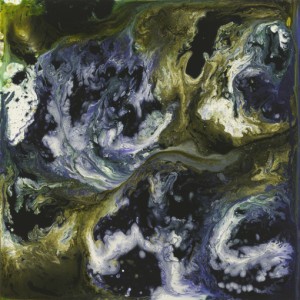One of the most important constituent of architecture is the matter: architects always need to figure out a form though the design and think of its materiality to make them ideas come physical.
Through history, form-making was associated with different processes, for instance the Creationists believed that form began in God’s mind and it was fixed, from the outside till the molecules; a changing in this point of view was given by classical physics who analyzed the form-making as spontaneous behavior not self-generated but produced by some transcendental agency in the background.
Today one principle that we can use to study the form-creation is Deleuze’s theory, explained by DeLanda in “Deleuze and the genesis of form”, that underline the importance of matter as “inner receptacle for form”.
Referring on his research in genesis of form, Deleuze demonstrates that morphogenesis comes from one topological form that gives rise to many different instantiations. This base process is called Divergent Actualization.
Deleuze focuses his attention in the generative process of form which is more relevant than the proper final form’s result: as we can see in embryogenesis, the development of a complex organism starts from a single cell that is see as the space of energetic possibility in which dynamic processes govern the topological forms.
An improvement of Deleuze’s theory concern the existence of virtual forms: from the genesis’ research we recognize two structures: the strata (articulation of homogeneous elements) and the self-consistent aggregates (articulation of heterogeneous elements). In these processes there is a virtual form that underlies the isomorphism of the resultant form; for example a sedimentary rock pass through a process of strata of heterogeneous layers composed by different kind of pebbles which are distributed in groups with homogeneous properties by a process called Sorting machine. Finally through consolidation the final “architectural structure” is given.
This virtual process, responsible of generation of form, is a real virtuality that constitutes the machinery behind phenomena.
According with this theory matter becomes the inert receptacle for external forms, then a challenge of postmodernism could be to work with material to enrich “conceptual reservoirs” of science and art.
We can bring the theory back to reality and focus our attention in a contemporary example of architecture, the Rolex Center by SANAA, a cultural center designed as landscape and composed by shells to define the floor of the building, and by a steel roof laid over all the building.
In that architecture we understand that form finding of shells play a fundamental role in the project which purpose was to create with shape a different and more flexible system of communication and mobility inside the building. Final form was the most important thing for architects to find, achieving it also trough complex technical solutions and the improvement of the structure system.
The concept that I would like to use and develop in future project is the use of process of form making as important generative part of the design, in which physics and math rules, material and composition take part to define new solutions.

